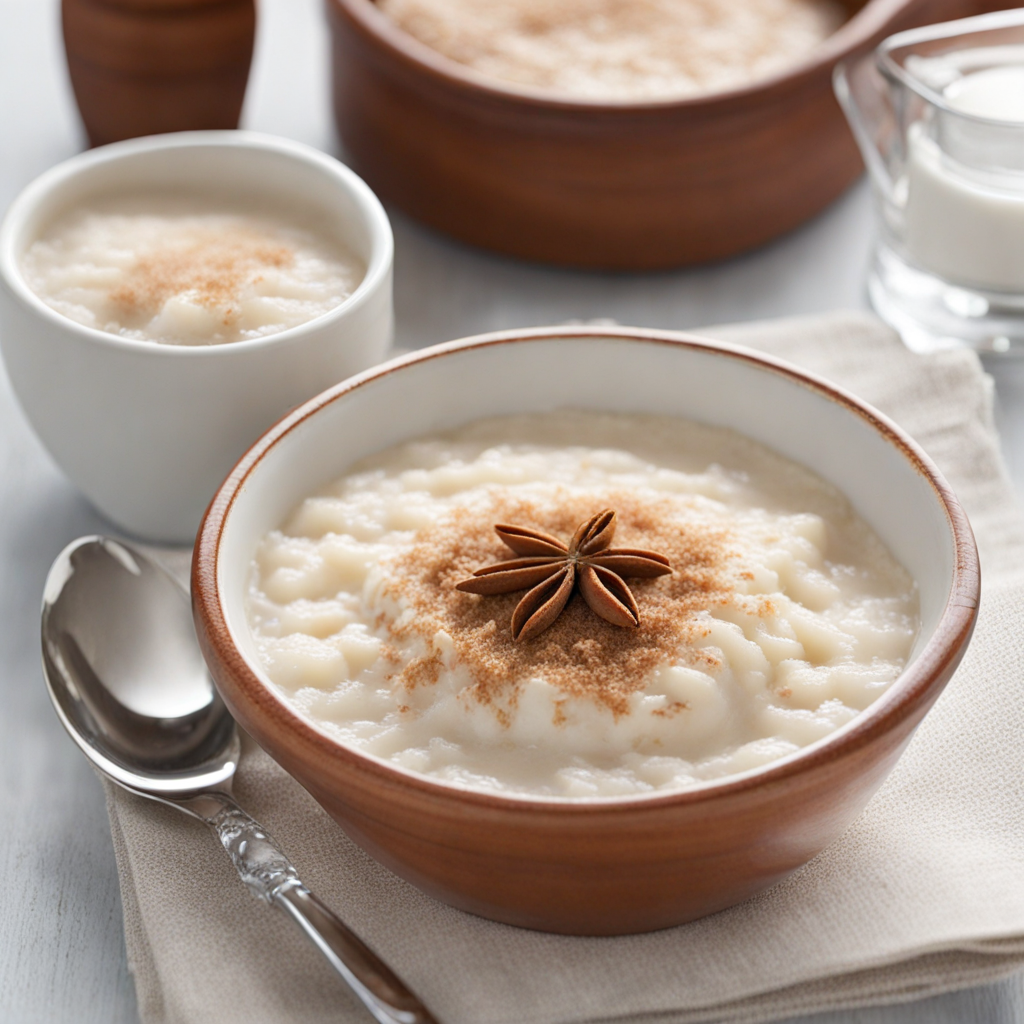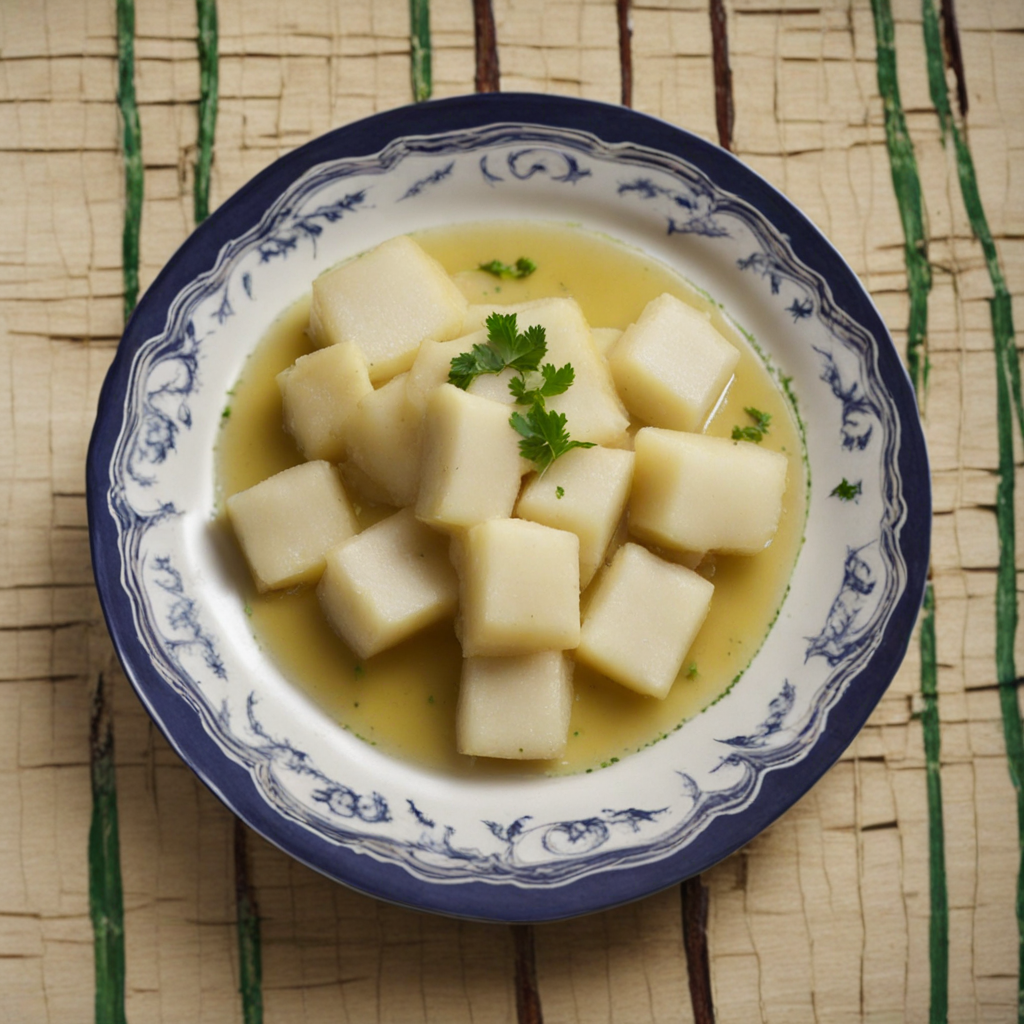Arroz con Leche
Arroz con Leche is a delightful Cuban dessert that embodies the essence of comfort food, combining creamy textures with warm, aromatic flavors. This dish is primarily made from rice, milk, sugar, and a touch of cinnamon, resulting in a luscious and rich pudding that melts in your mouth. The rice is cooked slowly in milk, allowing it to absorb all the flavors while achieving a tender consistency, creating a wonderful balance between the soft grains and the creamy liquid. The sweetness is perfectly complemented by the warm notes of cinnamon and sometimes vanilla, making every bite a cozy experience that evokes memories of home. As you dig into a bowl of Arroz con Leche, you'll notice the inviting aroma wafting through the air, bringing an irresistible warmth that is characteristic of many traditional Cuban desserts. The dessert is often garnished with a sprinkle of ground cinnamon on top, providing that extra flair and a hint of spice to each serving. Some variations may include the addition of raisins or a citrus zest, adding a delightful chewiness or a refreshing twist that elevates the dish even further. This versatility allows Arroz con Leche to cater to different palates, ensuring that everyone can find their ideal version of this classic treat. Enjoying Arroz con Leche is not just about the flavors but also about the experience it provides. This dessert is often served at family gatherings, celebrations, or simply as a comforting end to a meal, making it a cherished part of Cuban culture. Sharing a bowl with loved ones can create moments of joy and nostalgia, as stories and laughter flow just as freely as the creamy pudding itself. With each spoonful, you’ll be transported to the vibrant heart of Cuba, savoring not just a dessert, but a rich cultural heritage that celebrates the simple pleasures of life.
How It Became This Dish
The Sweet History of Arroz con Leche in Cuba Arroz con leche, often translated as "rice with milk," is a beloved traditional dessert that has transcended borders, becoming a staple in various Latin American cuisines. In Cuba, this creamy rice pudding holds a special place not only in the culinary landscape but also in the heart of its cultural identity. To fully appreciate this delightful dish, one must delve into its origins, cultural significance, and how it has evolved over time within the Cuban context. #### Origins: A Culinary Journey The roots of arroz con leche can be traced back to ancient civilizations, where grains were often cooked with milk and sweeteners. The dish likely originated in the Middle East, where rice was a staple. As trade routes expanded and cultures intertwined, the recipe made its way to Spain during the Moorish occupation. The Moors introduced rice cultivation to the Iberian Peninsula, and with it, the practice of cooking rice with milk and spices. When Spanish colonizers arrived in the Americas in the late 15th century, they brought with them their culinary traditions. The Spanish version of arroz con leche, made with milk, sugar, and cinnamon, became particularly popular. It was in this colonial context that the dish began to morph and adapt to local ingredients and tastes, eventually leading to the beloved Cuban version. #### Cultural Significance: A Taste of Home In Cuba, arroz con leche is more than just a dessert; it is a symbol of comfort and nostalgia. The dish is often associated with family gatherings, celebrations, and childhood memories. It is a staple at birthdays, holidays, and other festive occasions, where its creamy texture and sweet flavor provide a sense of warmth and belonging. Cuban cuisine is a melting pot of influences, combining Spanish, African, and indigenous Taíno elements. Arroz con leche exemplifies this fusion, as it incorporates ingredients and techniques from multiple cultures. The use of rice, a staple food in many parts of the world, reflects the blending of indigenous practices with European culinary traditions. Meanwhile, the addition of spices like cinnamon and vanilla highlights the African influence on Cuban cooking. The dish also plays a role in the broader context of Cuban identity. In a country marked by its history of colonization, migration, and cultural exchange, food serves as a medium for expressing heritage and community. Arroz con leche, with its simple yet rich flavors, embodies the resilience and warmth of the Cuban spirit, connecting generations through shared recipes and traditions. #### Development Over Time: From Tradition to Modernity The preparation of arroz con leche has evolved over the years, adapting to changing tastes and lifestyles. Traditionally, it was made using basic ingredients—rice, milk, sugar, and spices—cooked slowly to create a creamy consistency. Many families have their own cherished recipes, often passed down through generations, each adding a personal touch with variations in spices or the use of coconut milk for added flavor. In the mid-20th century, following the Cuban Revolution of 1959, the cultural landscape of Cuba began to shift dramatically. The government instituted a series of reforms that affected food distribution and availability. Despite these changes, arroz con leche remained a beloved comfort food, symbolizing continuity amidst upheaval. The dish became a way for families to connect with the past, preserving recipes even as they adapted to new economic realities. With the advent of globalization and increased access to international ingredients, modern Cuban kitchens have seen a revival of arroz con leche, with chefs experimenting with flavors and presentations. Contemporary interpretations often infuse the dish with tropical ingredients like coconut or mango, reflecting the island's abundant produce. Some chefs have taken to garnishing it with fresh fruits or chocolate drizzles, merging traditional flavors with modern aesthetics. Despite these innovations, the essence of arroz con leche remains unchanged. It continues to evoke a sense of home and nostalgia, bridging the gap between past and present. In contemporary Cuba, as well as among Cuban communities abroad, the dish serves as a reminder of shared heritage and collective memory. #### Conclusion: A Culinary Legacy Arroz con leche is more than just a dessert; it is a culinary legacy that embodies the rich tapestry of Cuban culture. Its journey from ancient Middle Eastern origins to a cherished Cuban staple reflects the complexities of cultural exchange and adaptation. The dish's simplicity belies its profound significance, serving as a symbol of family, heritage, and resilience. As Cuba continues to navigate the challenges of modernity and change, arroz con leche remains a steadfast presence in the lives of its people. Whether enjoyed at a family gathering, a festive celebration, or simply as a comforting treat after a long day, this creamy rice pudding continues to bring joy and a sense of belonging to those who savor it. In a world that often feels fragmented, the act of sharing a bowl of arroz con leche can evoke memories of laughter, love, and togetherness. It is a testament to the ways in which food can nourish not just the body, but the soul—a reminder that, no matter where one finds themselves, the flavors of home are never too far away.
You may like
Discover local flavors from Cuba







